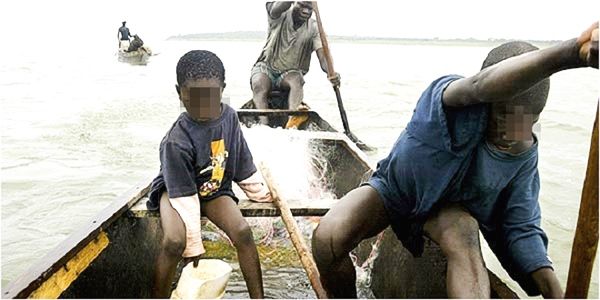
‘Intensify fight against child labour ’
The Ghanaians Against Child Abuse (GACA) social drive was launched by the wife of the Vice-President, Mrs Samira Bawumia, in November 2017 with the ultimate goal to ‘promote the well-being of children, prevent abuse and protect children from harm’.
The GACA campaign seeks to reduce the acceptance of social practices that have negative consequences on children by creating a critical mass of people to promote the adoption of behaviours favourable to the protection of children and adolescents.
Advertisement
It also aims at mobilising a critical mass of people to positively influence social norms and promote the adoption of behaviours favourable to the protection of children and adolescents.
Ultimately, the social drive is expected to support the reduction of violence against children and adolescents, including harmful practices.
GACA campaign
The GACA campaign is a joint programme of the Ministry of Local Government and Rural Development, the Ministry of Gender, Children and Social Protection, the Ministry of Education, UNICEF and NGO partners. It is generously supported by Global Affairs Canada, KOICA Korea and the United States Agency for International Development (USAID) Ghana.
The GACA campaign currently has 11 thematic pillars addressing pressing child protection and sexual and gender-based violence (SGBV) issues in Ghana, with a focus on adolescent girls and boys. The pillars of the campaign include Child Sexual Abuse, Child Trafficking, Corporal Punishment, Child Labour, Verbal Abuse and Child Marriage.
State of the Nation Address
Presenting this year’s State of the Nation Address to Parliament yesterday, President Nana Addo Dankwa Akufo-Addo mentioned that Ghana’s fight against child labour had chalked up some modest success.
He said through the implementation of the second phase of the National Plan of Action (2017-2021), Ghana had been moved up from the Tier-2 Watch List position of the Trafficking in Persons (TIP) Report to Tier-2 in 2018.
Child labour is one issue that is common in many African countries, including Ghana.
In this part of the world, poor parents who put their children through such traumas see it as a way of allowing their children to contribute to the survival of their families.
In Ghana, for instance, there are parents who will force their children to sell sachet water on busy principal streets of the regional capitals without taking into consideration the repercussions of their actions.
The concept of child labour is based on the International Labour Organisation (ILO), Minimum Age Convention, 1973 (No. 138), which represents the most comprehensive and authoritative international definition of minimum age for admission to employment or work.
Under Ghana’s Children’s Act 1998, (Act 560), which guarantees basic rights of children and protects them from any kind of abuse and exploitation, minimum age for admission of children into employment is 15.
However, children may be employed at the age of 13 to do light work.
The minimum age for engagement of persons in hazardous work is 18.
Worst forms of child labour
Whilst child labour by both boys and girls takes many different forms, the elimination of the Worst Forms of Child Labour (WFCL) as defined by ILO Convention 182 is a priority.
The convention calls for immediate prohibition of the WFCL, enacting laws, regulations and standards.
Secondly, it requires ratifying States to take urgent and effective measures to eliminate these worst forms through programmes of action.
It applies to all children under the age of 18, but calls for special attention to girls.
Under the country’s 1992 Constitution and the Children’s Act, a child is a person below the age of 18.
The basic rights of the child are guaranteed in a number of elaborate provisions under these laws.
According to the United States Department of Labour Bureau of International Labour Affairs, in 2017, Ghana made a moderate advancement in efforts to eliminate the worst forms of child labour.
The government secured at least five convictions for offences related to the worst forms of child labour and launched the National Plan of Action for the Elimination of Human Trafficking in Ghana.
The government began extending the Ghana School Feeding Programme to include schools in refugee camps and ratified the Minamata Convention on Mercury, which obligates signatory countries to incorporate strategies to prevent the exposure of children to mercury in gold mining sites.
However, children in Ghana continue to engage in the worst forms of child labour, including in fishing and cocoa harvesting as a result of human trafficking.
UNICEF’s report
A 2012 State of the World’s Children Report by the United Nations International Children’s Fund (UNICEF) describes the activities of children engaged in exploitative labour as “worrying”, and warns that these exploitative and harmful ways have the tendency to affect the physical and mental growth of children who are made to undergo such practices.
The warning must be taken seriously by all those who have the interest of children at heart, including parents, governmental and non-governmental organisations, civil society organisations, and ministries and agencies concerned with the welfare of children.
The President’s assurance on the country’s progress in the fight against child labour should stir up a more positive move to push all those engaged in the fight against child labour to continue to play their roles actively and responsibly and to intensify the fight against the menace.
This is necessary to ensure that the rights of the child (contained in the Convention on the Rights of the Child) are respected, bearing in mind that no violence against children is justifiable.
All violence against children is preventable.



